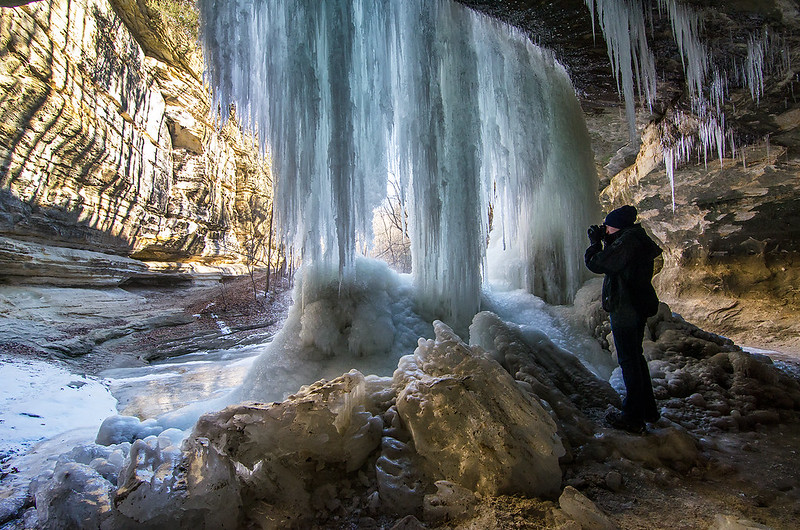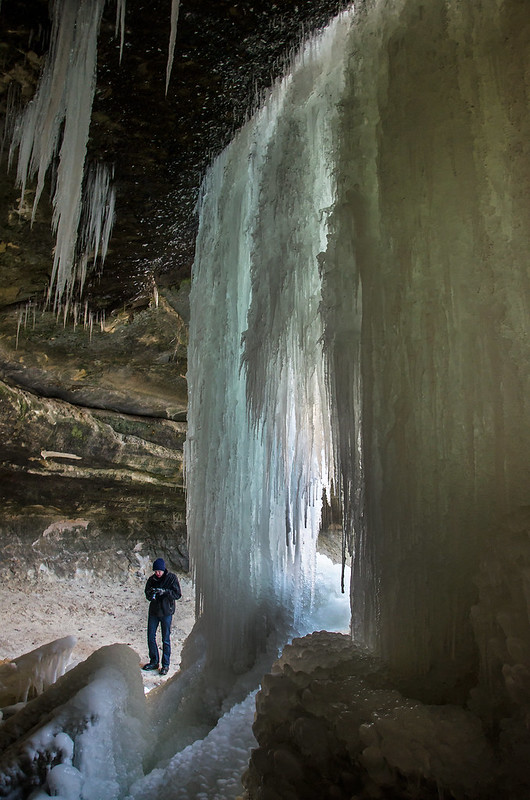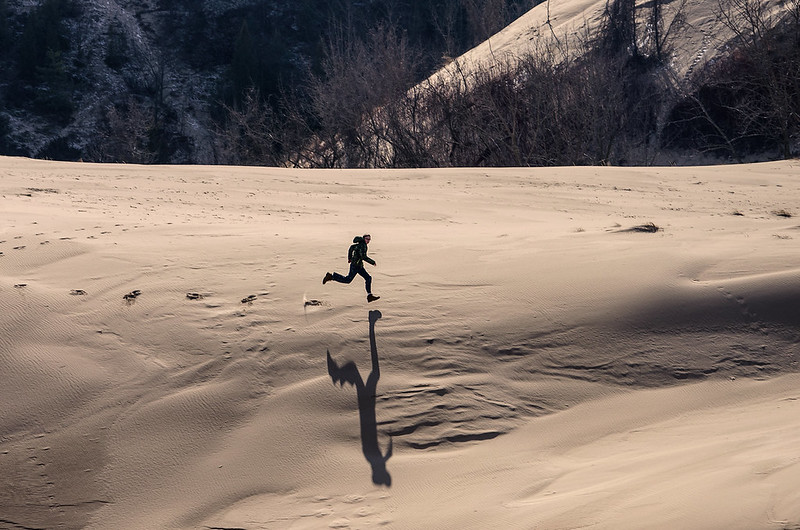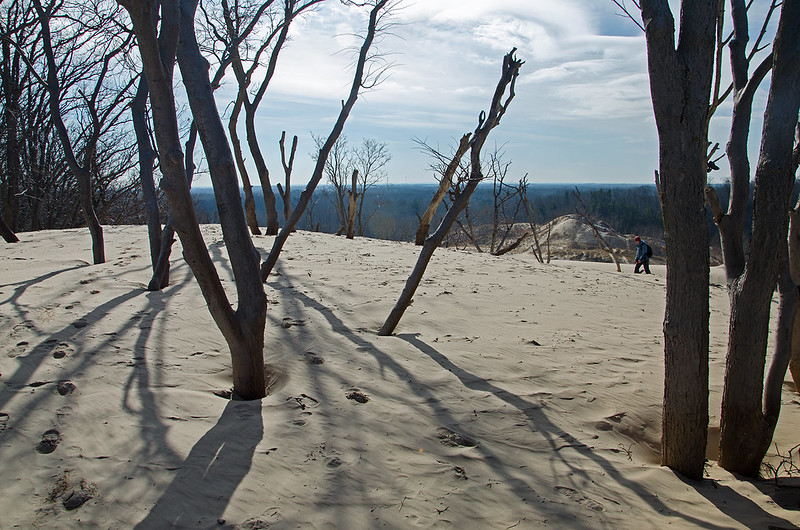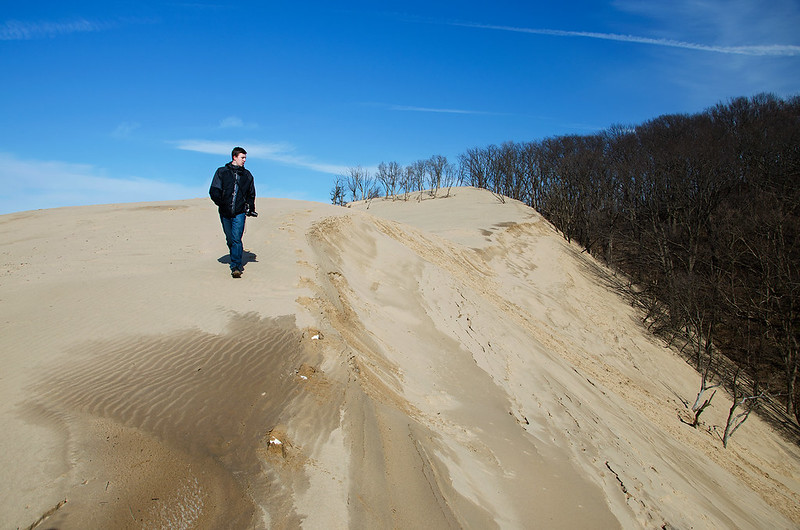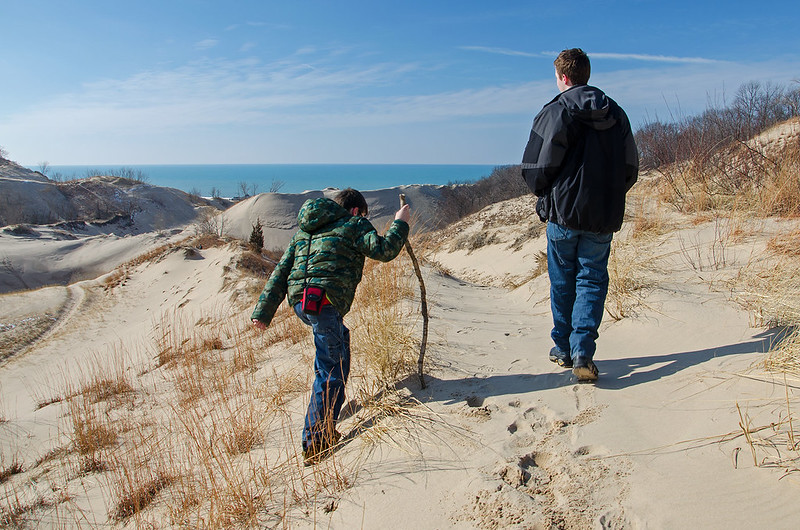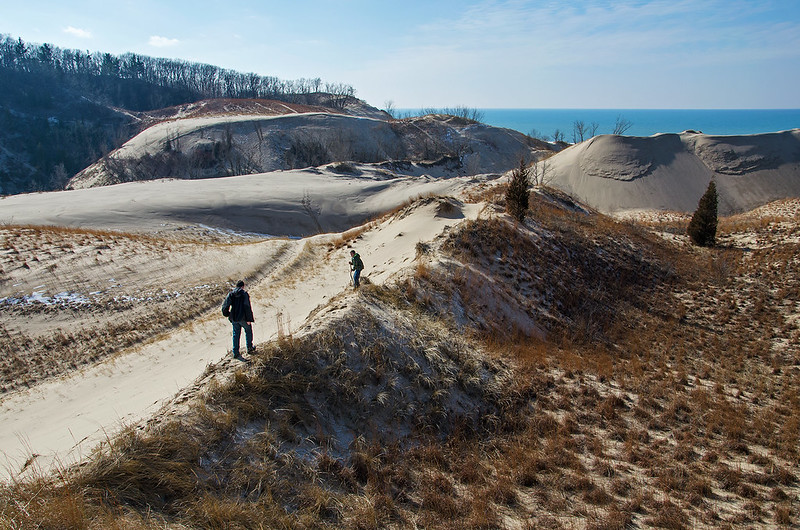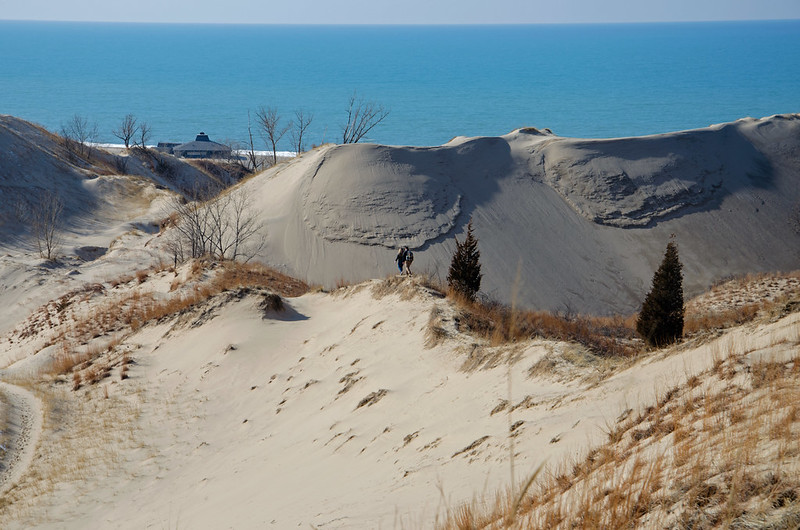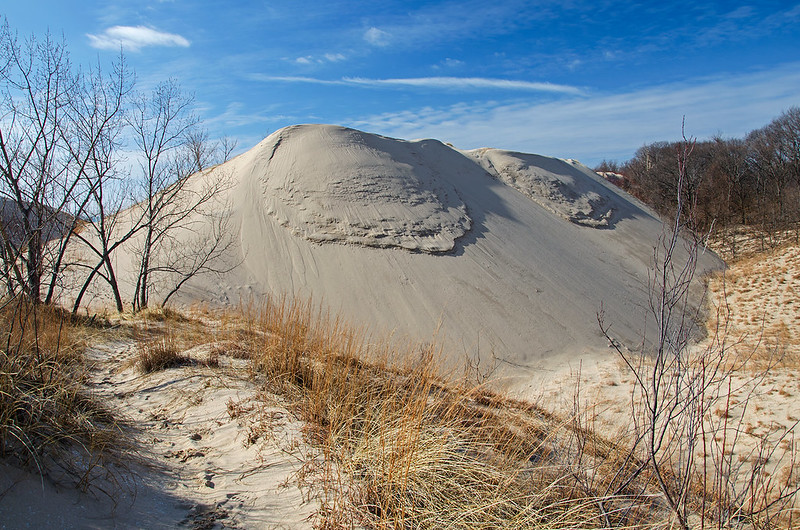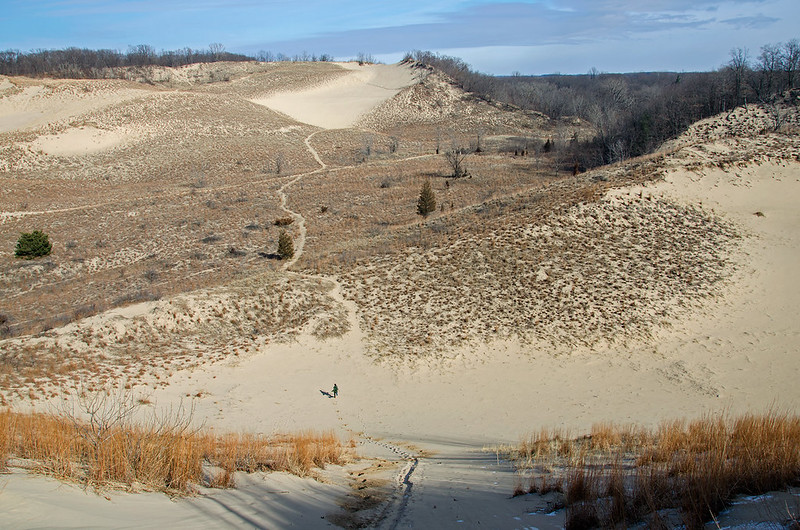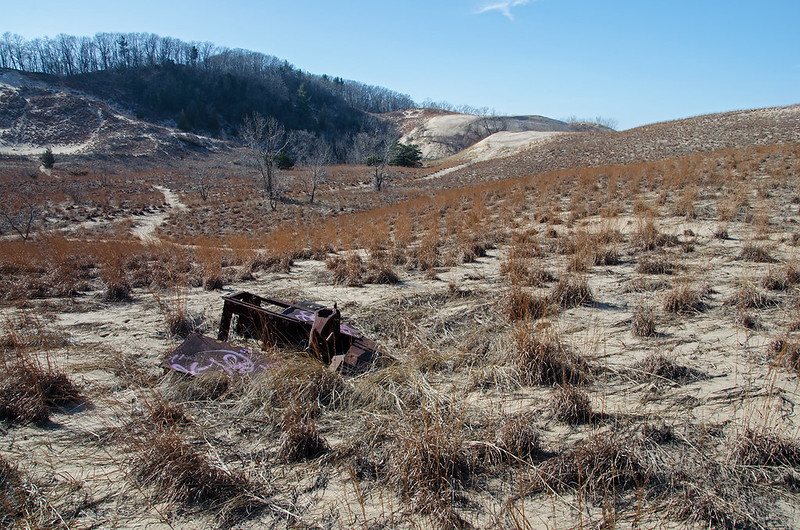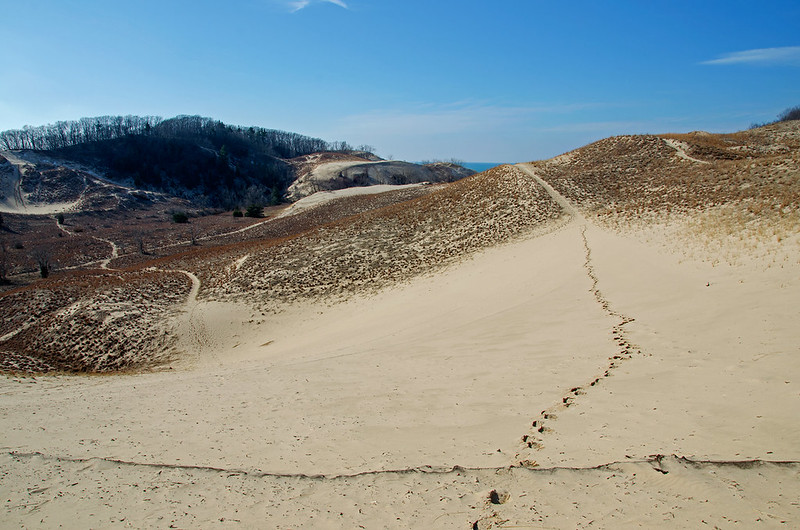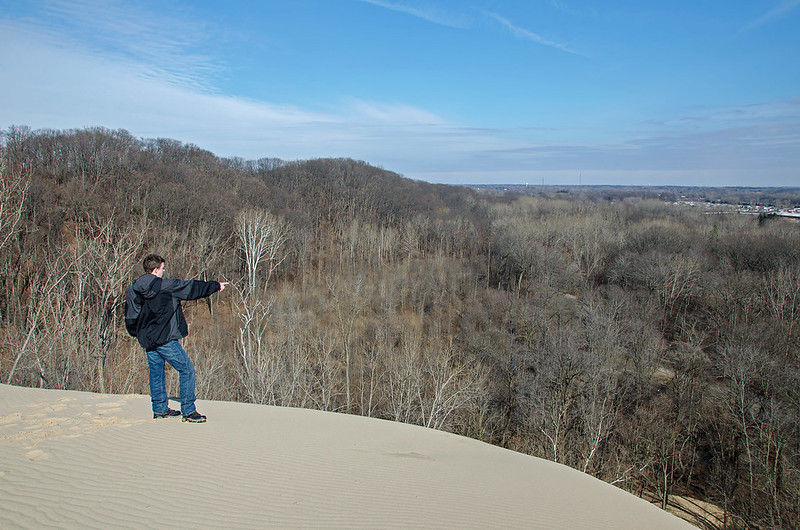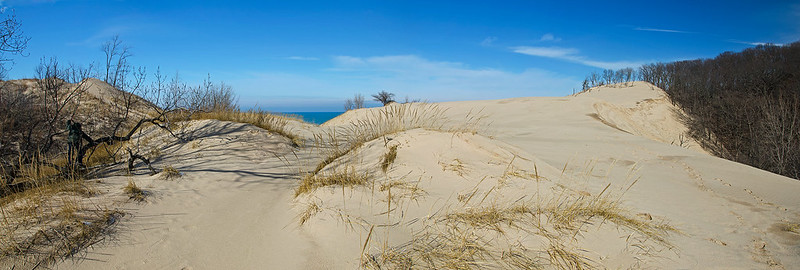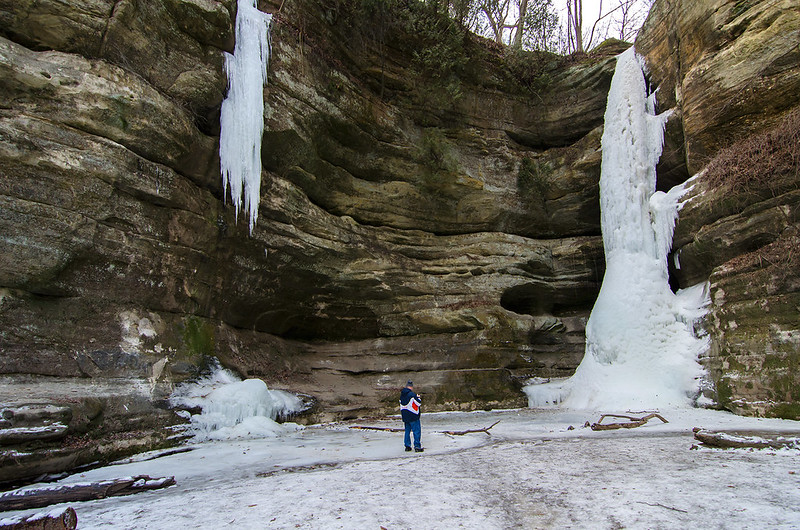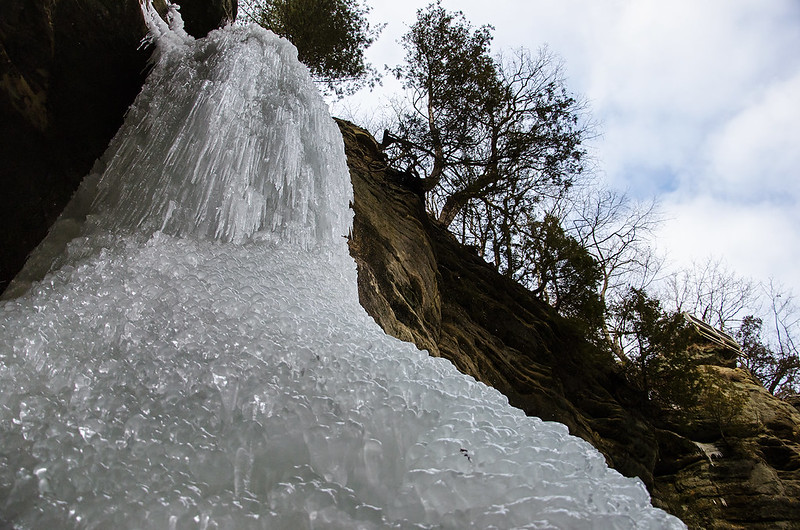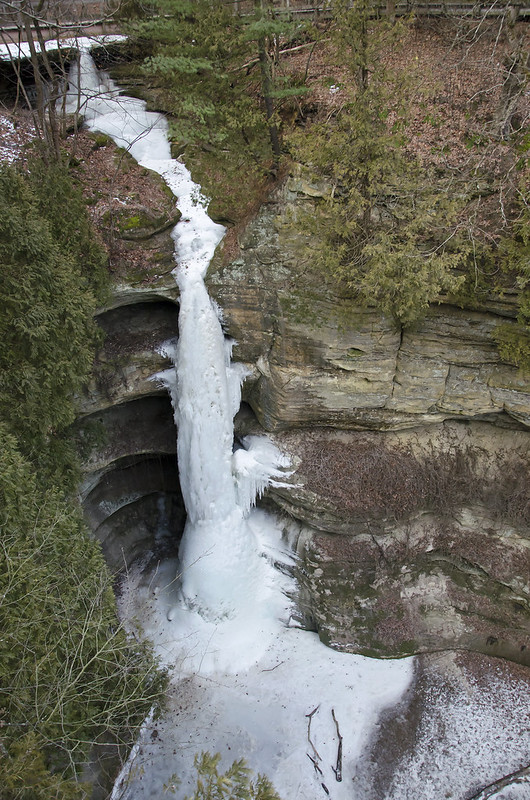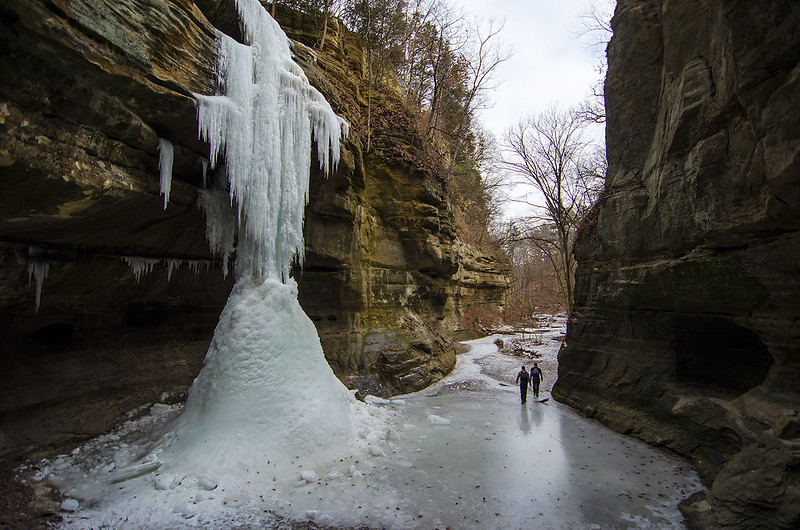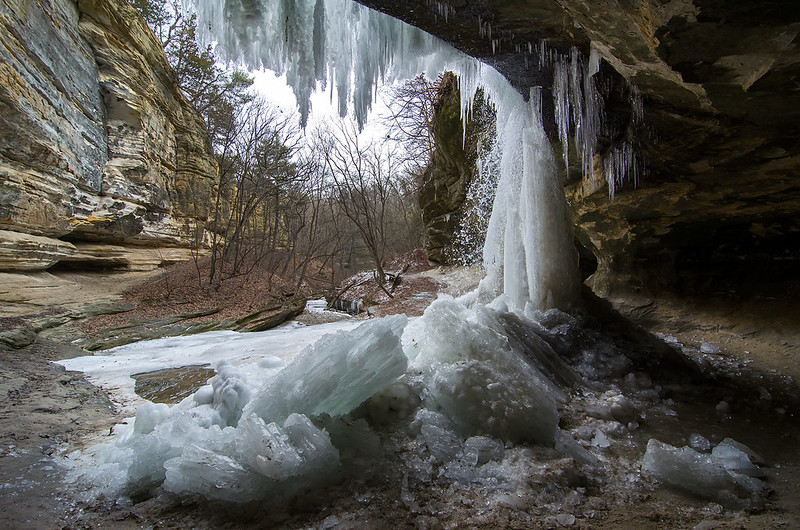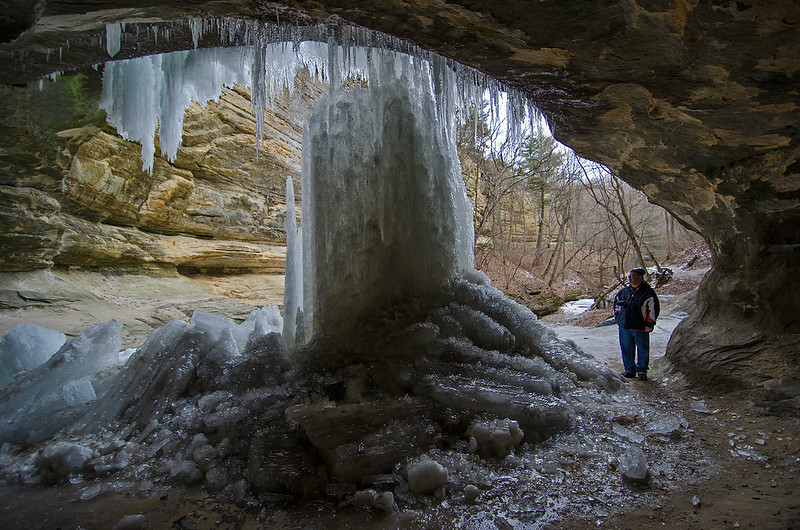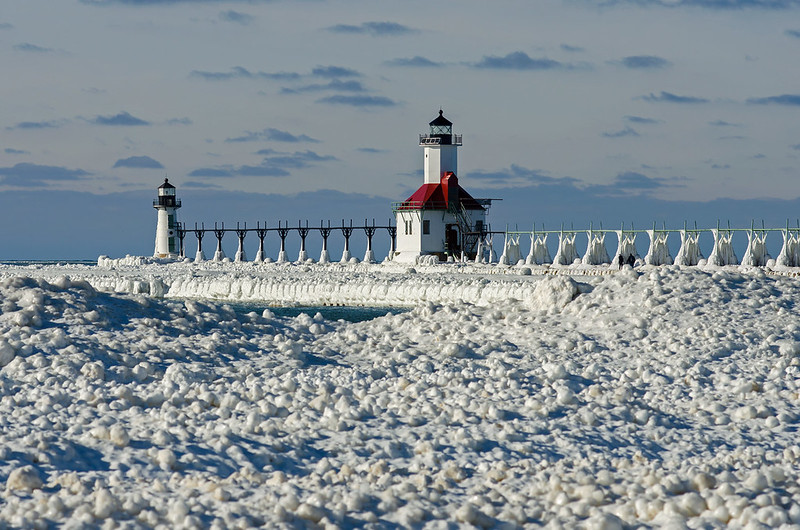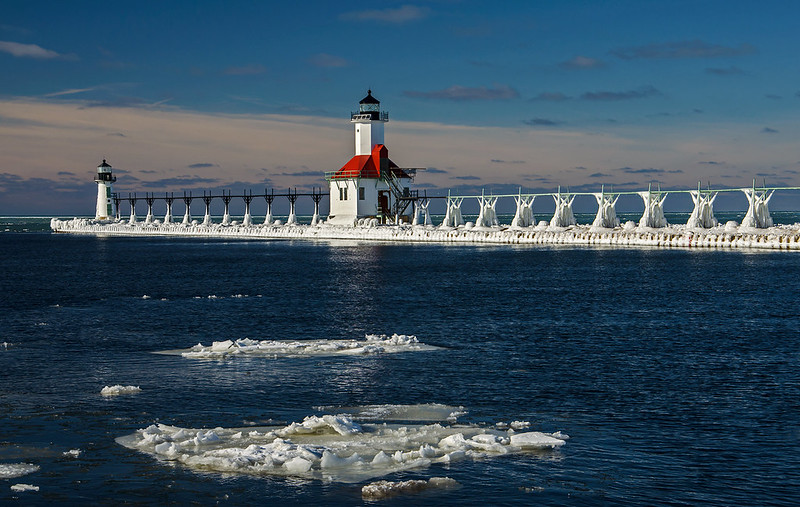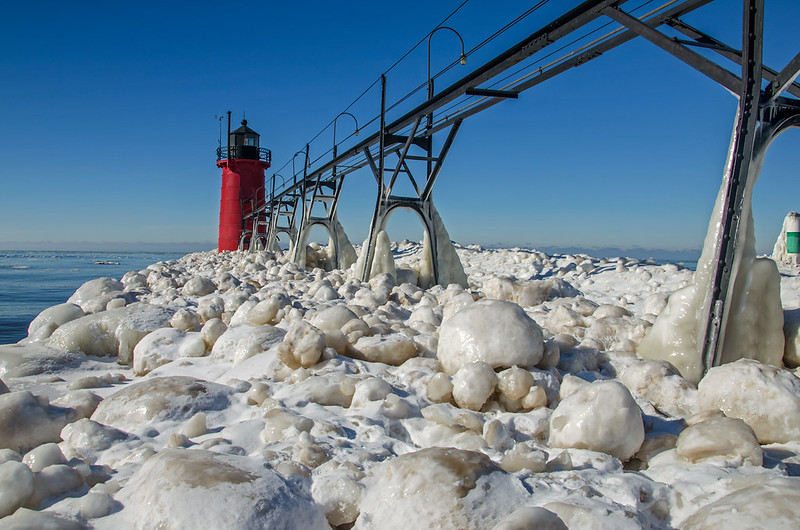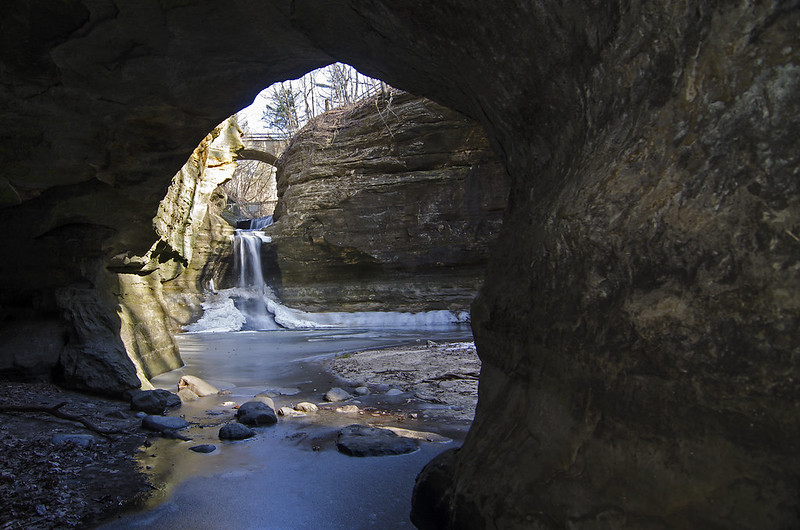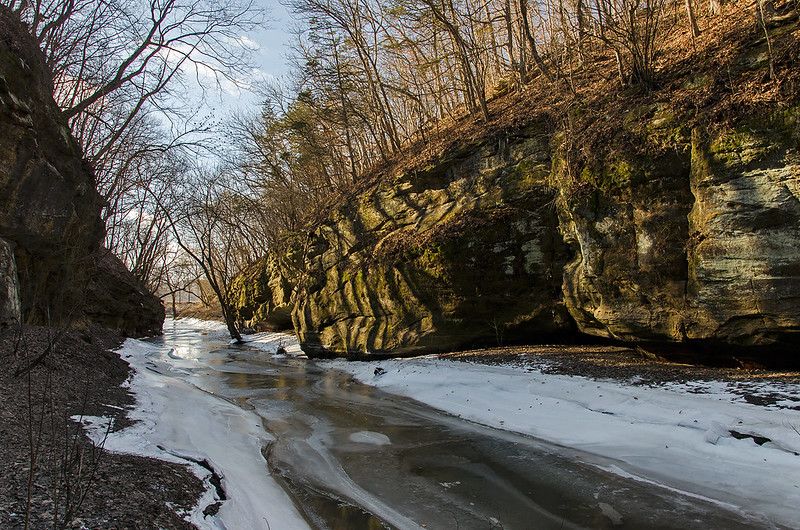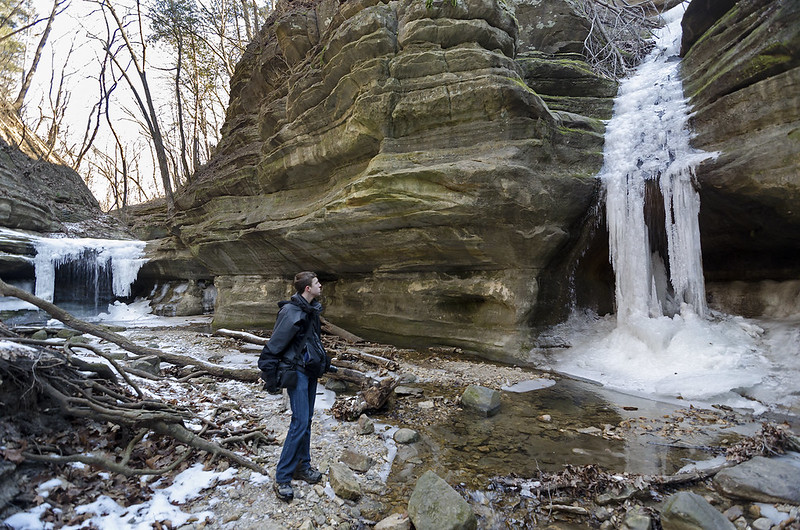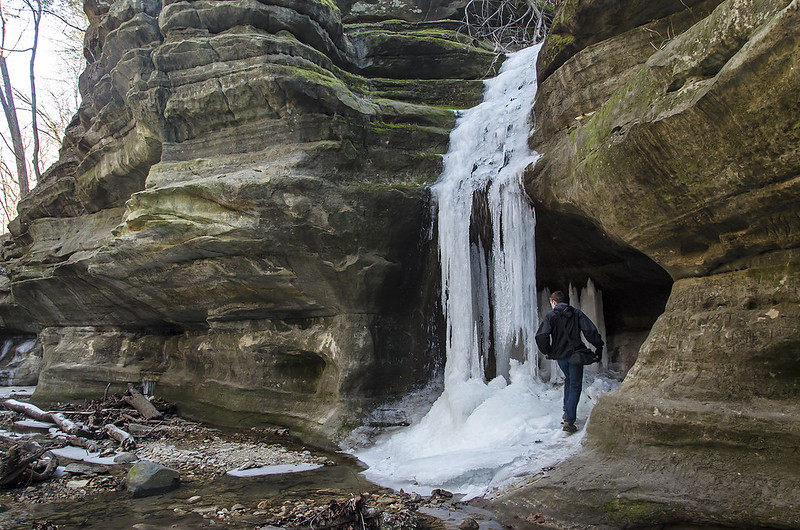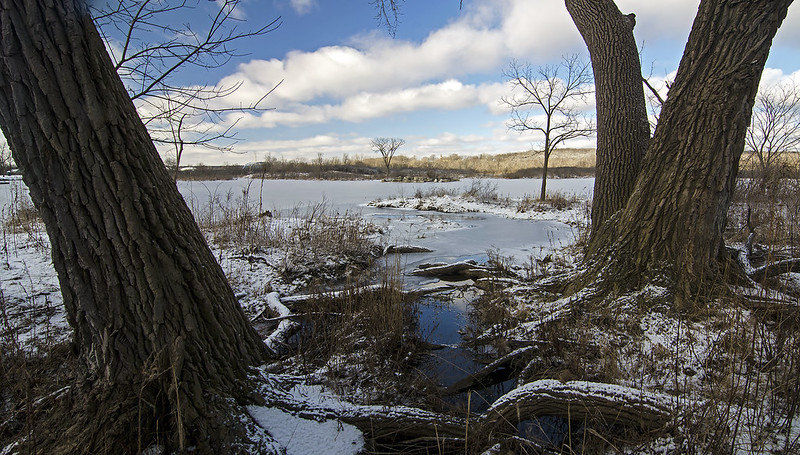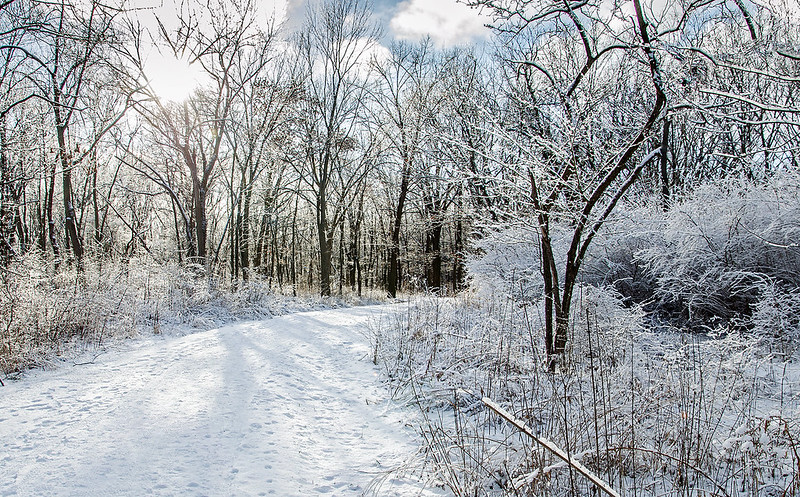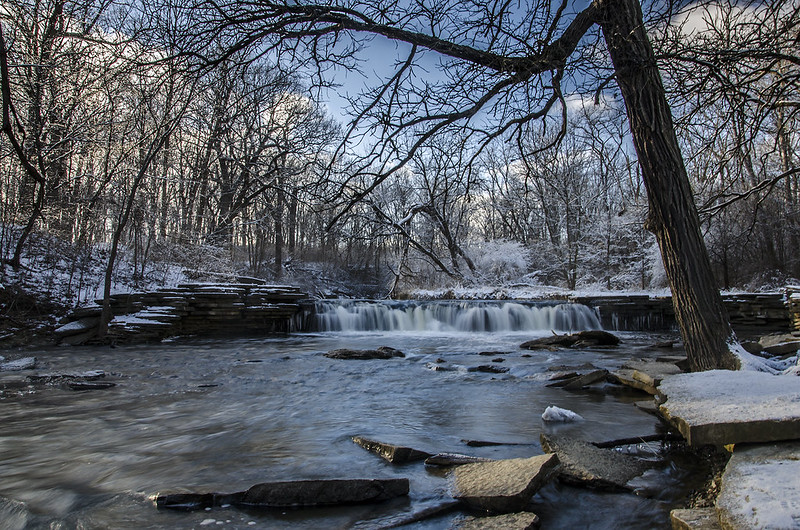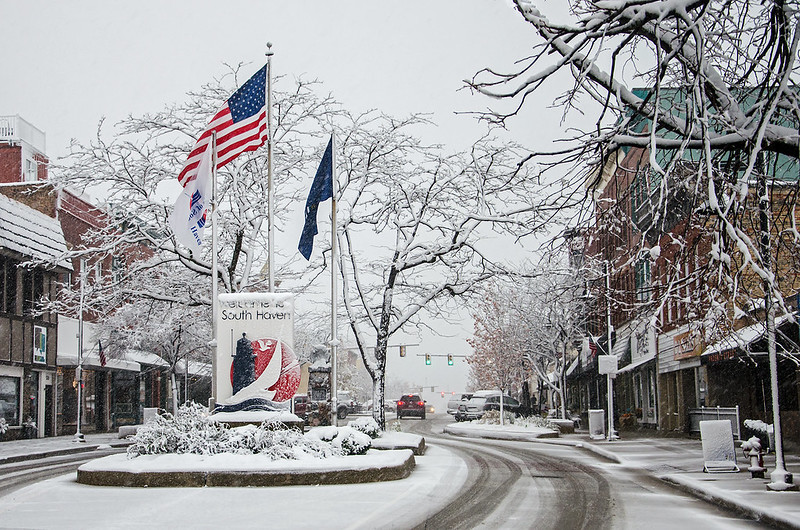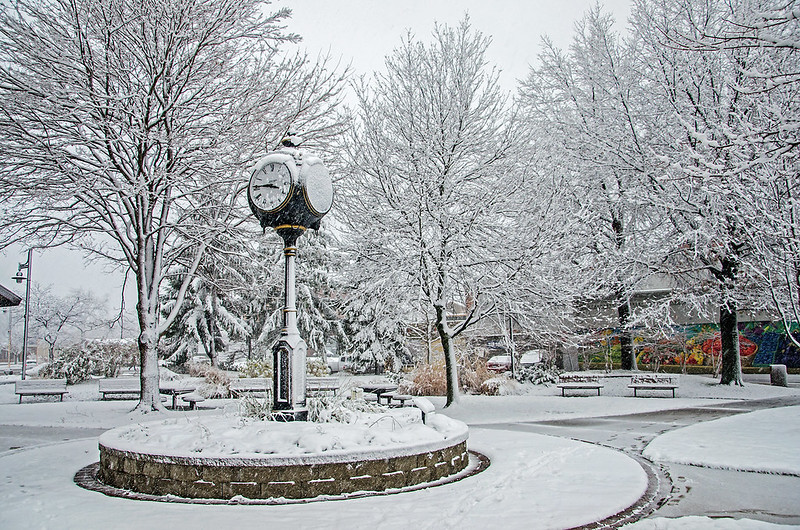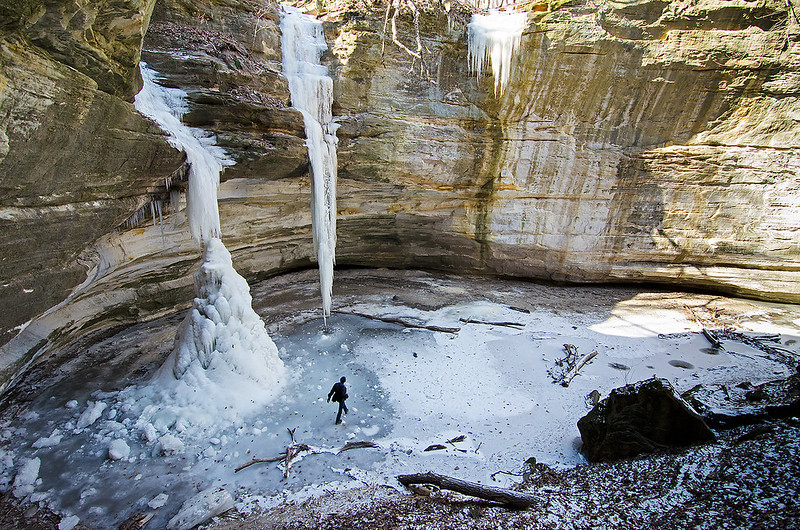
Our search for frozen waterfalls brought us to another of Starved Rock State Park's canyons, Ottawa Canyon. Located just past the Council Overhang, Ottawa Canyon is a blind canyon with a generally low flowing waterfall of approximately 50 feet in height. The low flow portion of this waterfall is evident in the giant icicle pictured below. The ice formation is at least 40 feet long.
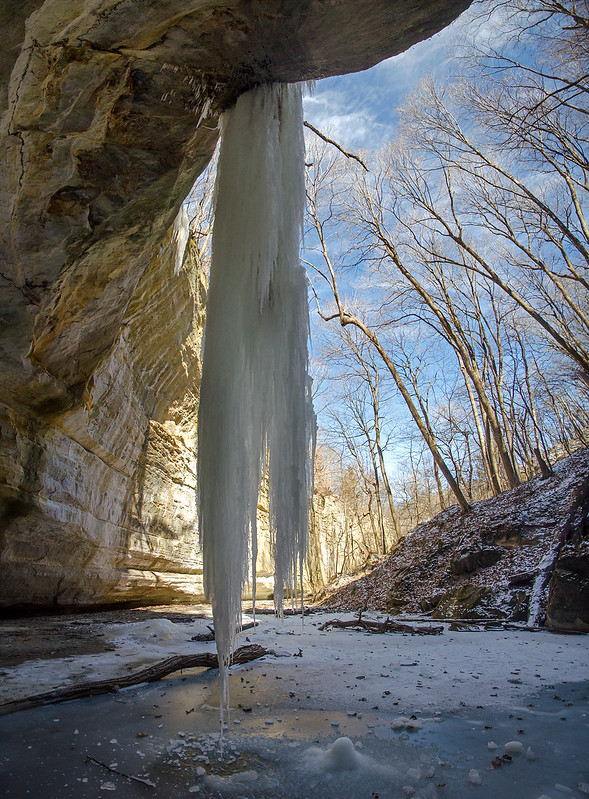
It stretches from the rim of the canyon to a point 4 inches short of the floor (by now it might have reached the floor). If the water was more plentiful, the ice would have built up from the bottom as well, because the water would fall, freeze, and pile upward. We see this in most every other waterfall in these canyons.
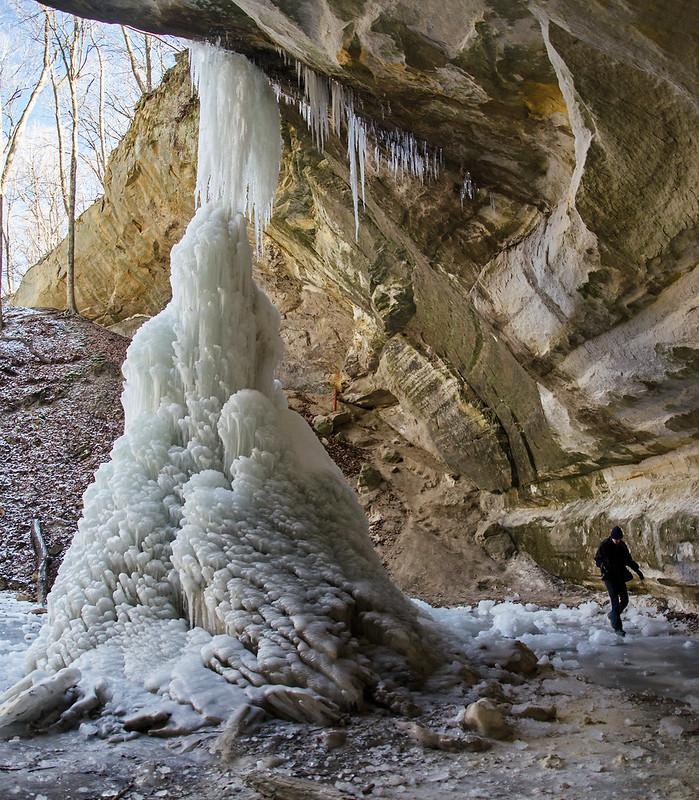
The main portion of the icefall in Ottawa Canyon is more typically formed. Ice hanging from the rim, and ice building from the floor until the two meet. This canyon is such that visitors can easily walk around the icefall, and see the formation from all angles. The size of the column of ice is impressive.
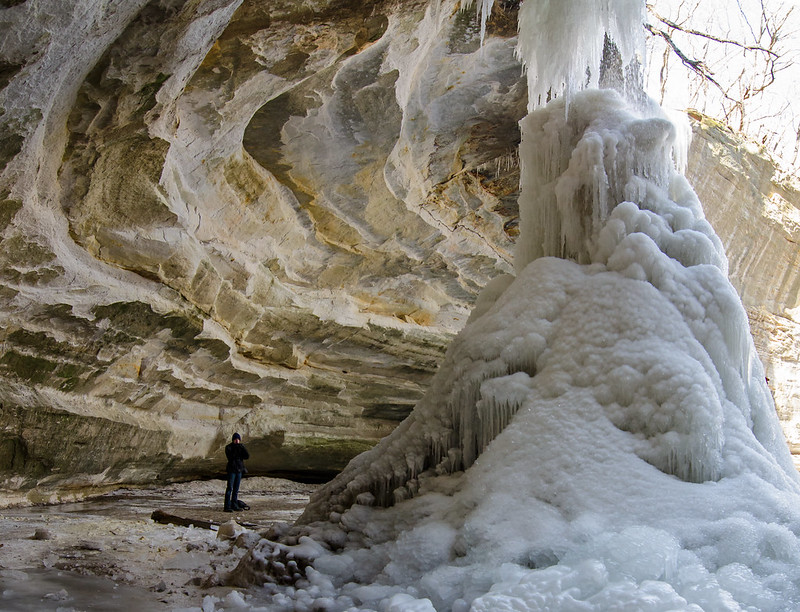
Other interesting features of this canyon include the horizontal bands of color in the rock. This provides a great contrast to the vertical ice formations. When sunlit, the dark bands take on a warm hue against the bands of cooler colored rock.

The difference between the two types of ice formations can be easily compared in the photo above. One built from the top down and bottom up, the other, built only from above. We made certain we stayed far away from the hanging formation- figuring it was much more unstable than the others, and could prove fatal if it crumbled onto us.

